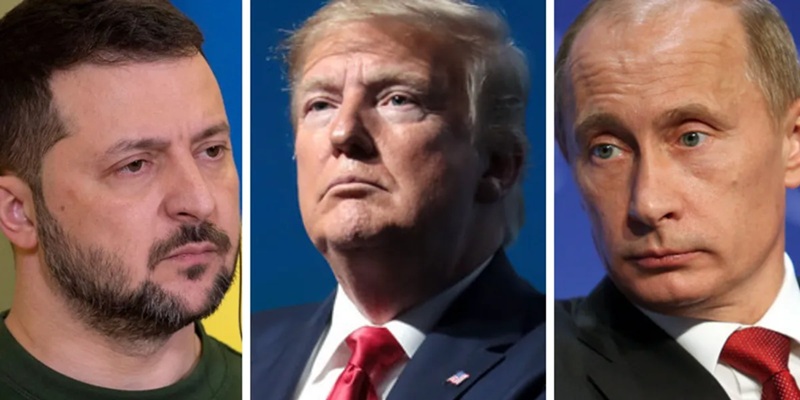On May 19, 2025, U.S. President Donald Trump held separate, high-stakes phone conversations with Russian President Vladimir Putin and Ukrainian President Volodymyr Zelenskyy, announcing that Russia and Ukraine would “immediately” begin ceasefire negotiations following his two-hour call with Putin. Trump described his discussion with Putin as “excellent” and credited their personal rapport for creating a window of opportunity for peace talks. Putin, for his part, affirmed Russia’s willingness to work on a memorandum toward a possible peace framework but reiterated core Russian demands, including Ukraine’s renunciation of NATO membership and territorial concessions. Ukrainian President Zelenskyy welcomed the prospect of negotiations while warning that new sanctions would follow if Russia’s conditions proved unacceptable. European leaders, including European Commission President Ursula von der Leyen, expressed cautious support but emphasized that any deal must uphold Ukraine’s sovereignty.
Background
The Ongoing Conflict
Since Russia’s full-scale invasion of Ukraine in February 2022, the war has raged for over 39 months, characterized by intermittent fighting, shifting front lines, and repeated diplomatic overtures. Earlier ceasefire attempts—such as Russia’s unilateral truce for Victory Day in May 2025—collapsed amid mutual accusations of violations and a lack of robust monitoring mechanisms. A March 2025 U.S.-Ukrainian proposal for an unconditional 30-day ceasefire was accepted by Kyiv but rejected by Moscow, illustrating the deep mistrust between the parties. Both Kyiv and Western capitals have pressed for a durable agreement, yet fundamental disagreements—particularly over Ukrainian NATO aspirations and Russia’s annexation of territory—have stymied progress.
U.S. Mediation Efforts
The United States has played a central role in attempting to broker peace, offering incentives such as resumed intelligence sharing and arms supplies. However, U.S. policy has oscillated between robust support for Ukraine and overtures toward Russia, reflecting domestic political dynamics and President Trump’s well-known skepticism of NATO expansion and his personal affinity for Putin. This ambivalence has complicated Europe’s efforts to maintain a united front; several EU foreign ministers convened under the “Weimar+” format to assert that a peace process excluding Europe would yield an unjust settlement.
Details of the Call
Content and Tone
Trump reported that his conversation with Putin lasted more than two hours and was marked by a surprisingly positive tone, with both leaders expressing a shared interest in ending hostilities. According to Reuters, Putin stated that efforts to end the war were “generally on the right track” and that Moscow stood ready to collaborate on a memorandum proposing a future peace accord. Trump floated potential incentives for Russia, including the easing of sanctions and expanded trade relations, contingent on Moscow’s commitment to the negotiations.
Points of Contention
Despite the optimistic framing, Putin’s reiterated demands—chiefly Ukraine’s abandonment of its NATO bid and recognition of Russian-held territories—remain non-starters for Kyiv and its Western backers. Vice President J.D. Vance and other U.S. officials have publicly questioned Russia’s sincerity, warning that the U.S. may withdraw from mediation if Putin continues to press maximalist conditions. In Kyiv, Zelenskyy insisted that Ukraine would only consider an unconditional ceasefire and reinforced the need for continued international pressure on Russia.
Reactions
United States
Domestic reactions in the U.S. have been mixed. Supporters of Trump view his direct engagement with Putin as a pragmatic step toward ending a costly conflict. Critics, including Senator Lindsey Graham, argue that Trump’s outreach risks legitimizing Russian aggression and undermining NATO’s credibility. Congressional leaders are reportedly considering legislation to impose secondary sanctions on entities that trade with Russia, reflecting bipartisan unease over Trump’s approach.
Europe
European Union officials have cautiously welcomed the prospect of renewed dialogue but underscored that any peace must respect Ukraine’s territorial integrity. The newly formed Weimar+ group of European powers has emphasized that Europe cannot be sidelined in negotiations that have profound implications for the continent’s security architecture.
Ukraine and Russia
In Ukraine, Zelenskyy’s office expressed guarded optimism, noting that Ukraine remained “ready for talks” but would not compromise on core principles. Russian state media hailed the call as a diplomatic victory for Putin, framing it as proof of Moscow’s central role in any resolution.
Implications for Ukraine
Strategic Considerations
If negotiations proceed, Ukraine faces a delicate balance between achieving a ceasefire and preserving its long-term security goals. Accepting a truce under Russian-imposed terms could freeze the conflict in a state of perpetual limbo, legitimizing Moscow’s gains. Conversely, continued fighting risks further humanitarian suffering and infrastructure devastation, potentially weakening Ukraine’s bargaining position.
Economic and Humanitarian Impact
A genuine ceasefire could allow humanitarian corridors to open, enabling aid delivery to besieged regions and facilitating the reconstruction of critical infrastructure. However, any peace agreement lacking robust monitoring and enforcement mechanisms may simply encourage renewed hostilities, leaving communities vulnerable.
What’s Next
Possible Venues
Zelenskyy has floated potential neutral sites for talks, including the Vatican, Switzerland, or Turkey. The Vatican, under Pope Leo XIV, has offered to host negotiations, reflecting a broader interest from faith-based and international organizations to contribute to peace efforts.
Third-Party Participation
Any sustainable accord will likely require the involvement of international guarantors. The so-called “Coalition of the Willing”—a 31-nation group led by the U.K. and France—has pledged support for post-ceasefire peacekeeping and security guarantees for Ukraine. Such a force could provide the necessary deterrence against ceasefire violations and bolster confidence in the transition from war to peace.
Conclusion
While President Trump’s phone calls represent a potentially significant diplomatic opening, the path to a lasting peace in Ukraine remains fraught with challenges. The core issues—Ukraine’s NATO ambitions, Russia’s annexations, and the need for enforceable monitoring—have yet to be meaningfully addressed. The coming weeks will test whether political will and strategic incentives can overcome entrenched mistrust, or whether the latest round of talks becomes another temporary reprieve in a protracted and painful conflict.
